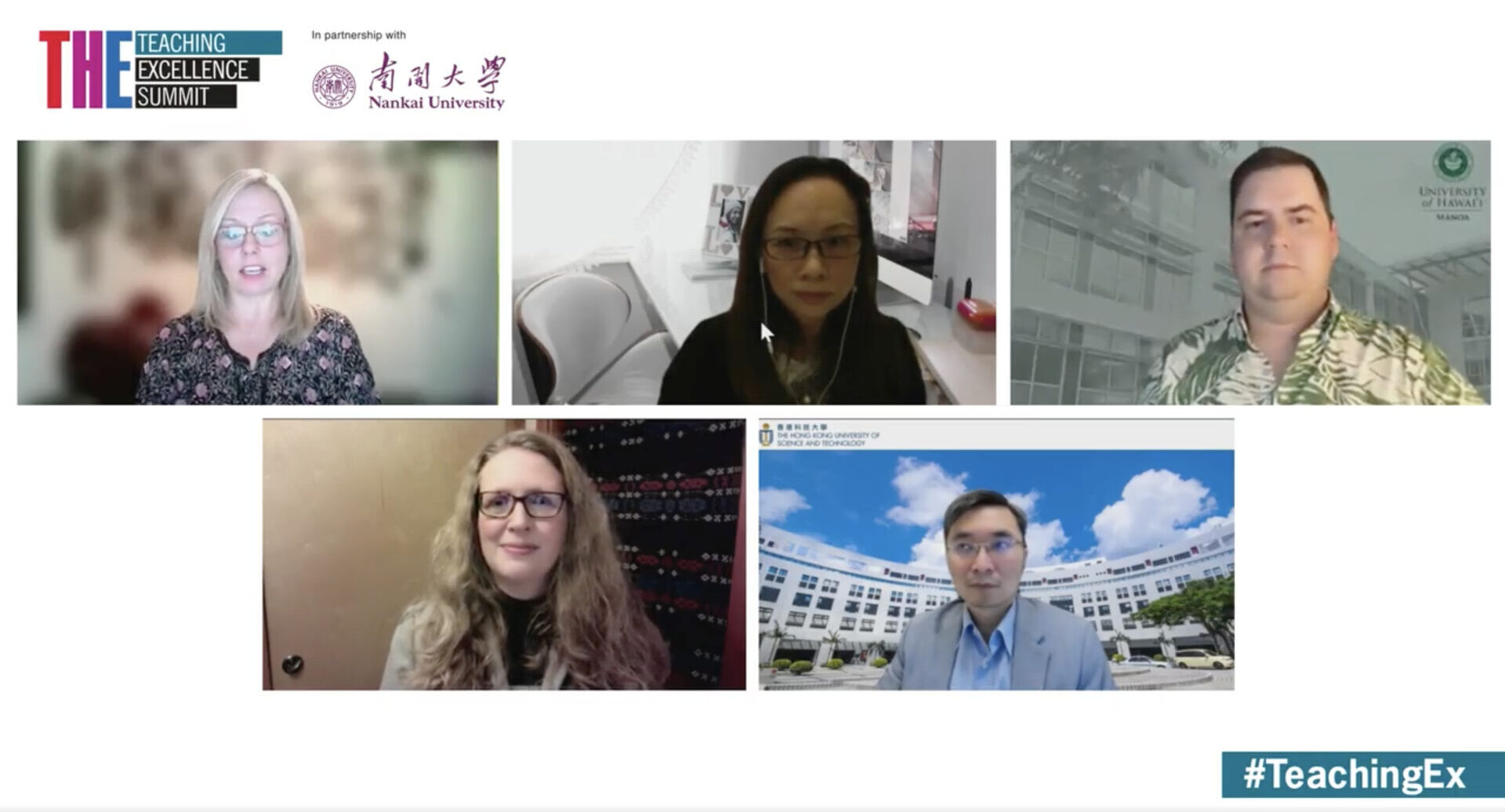Covid-19 has widened the gap already felt in STEM education, exerting pressure on the academic community to respond with new inclusive teaching practices. According to a recent paper, “Teaching in Virtual Environments: Global Educational Development to Respond to Challenges and Opportunities of the COVID-19 Pandemic” academic institutions have the opportunity to build capacity among faculty to respond to the shift in education brought on by COVID-19 by training their educators and implementing strategies outlined in the panel discussion.
Valuable food for thought was delivered in late-2021 at APRU’s panel on innovation in STEM Education as part of the THE Teaching Excellence Summit hosted by Nankai University, China.
Dr Mellissa Withers, Associate Professor, University of Southern California, and Program Director of the APRU Global Health Program moderated the session and opened the panel, “It has been challenging to keep an innovative mindset in shaping the learning experiences of students in various learning environments during this time of upheaval and transformation of traditional academic environments. This panel is designed to inspire new ways that STEM faculty can teach with student-centered teaching methods.”
“At The Chinese University of Hong Kong, we encountered a lot of issues in ensuring active participation in remote learning, but a shift to the students-as-partners concept worked out very rewarding,” said Vivian Wy Lee, Associate Professor at CHUK’s Centre for Learning Enhancement and Research and the University Associate Dean of Students.
“It involved translational co-creation projects with students from various backgrounds, such as health, engineering and science, and this diversity of participants made everybody think out of the box,” she added.
Robert Thomson, Associate Professor, Department of Biology, School of Life Sciences, University of Hawai’i at Manoā, explained how a course of conversation biology benefited from the shift to remote learning despite the university traditionally relying heavily on people personally knowing each other.
“Conversation biology is a very broad field, involving statistical modelling, field work activities on endangered plants and animals as well as cultural practices to build sustainable communities,” Thomson said.
“While the conventional approach was to get experts from these fields to come into our classes to comment and participate, the shift to video calls made us successfully reach out also to experts who are geographically far from Hawai’i,” he added.
Eleanor “Elly” Vandegrift, Program Director for Global Science Education Initiative, Global Studies Institute, Division of Global Engagement, University of Oregon, recalled how she during the pandemic thought a lot about how to create classrooms that work under the new circumstances and then came across a pioneering paper from 1999 that investigated issues associated with online learning.
The paper identified the three key elements social presence (students and teachers get to know each other); cognitive presence (during classes and between classes); and teaching presence (the structure created by the teacher to teach online).
“I overlaid this with what I want to do and arrived at a structure that makes sure that the students always introduce themselves to each other and that there always are breakout rooms and warm-up questions,” Vandegrift said.
“It is crucial to ensure that students and teachers see each other as people with lives outside the classrooms,” she added.
Tim Woo, Associate Professor of Engineering Education at The Hong Kong University of Science and Technology’s Department of Electronic & Computer Engineering, shared how HKUST grouped students from different backgrounds, such as business, science, and humanities, and assigned them with the creation of STEM workshops.
Some of these workshops used robots, with the target participants being senior elementary and junior high school students.
“Some of these young students had learning disabilities, and our university students were tasked with empowering these students in our STEM workshops,” Woo said.
“This created a strong ‘think out of the box’ effect and made our STEM education approach truly inclusive,” he added.
More information about the event and the recording at here.

